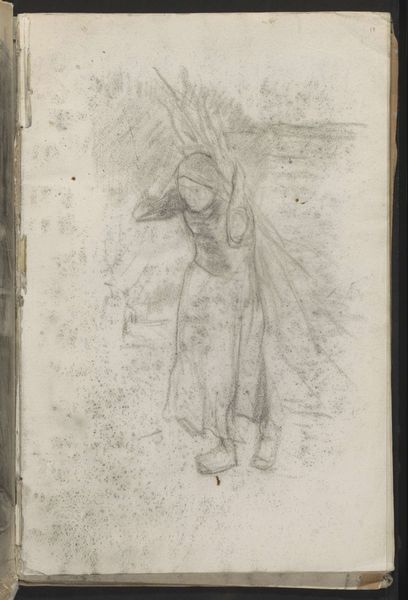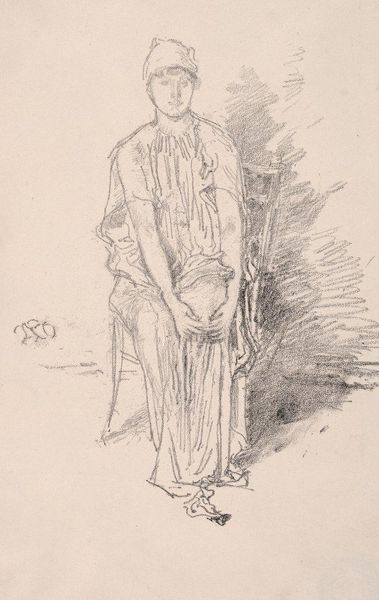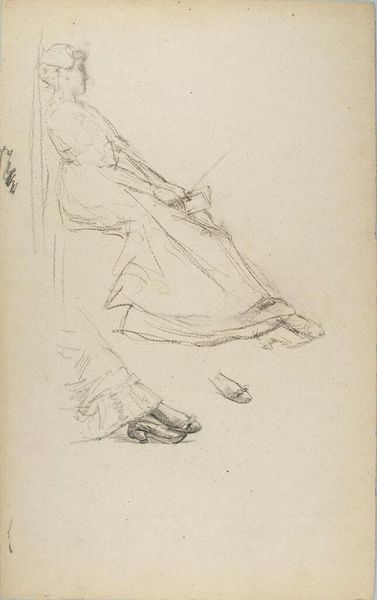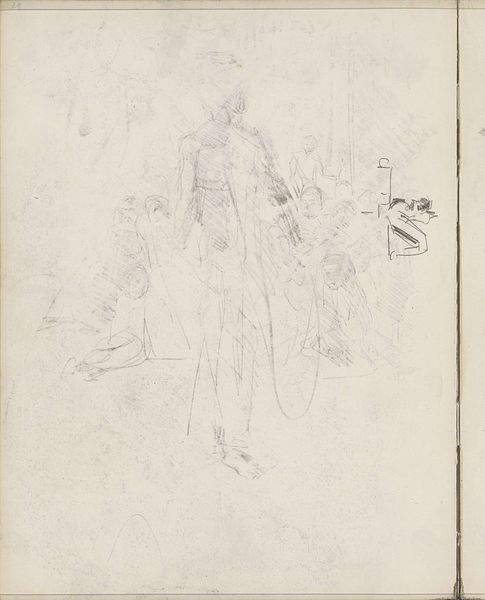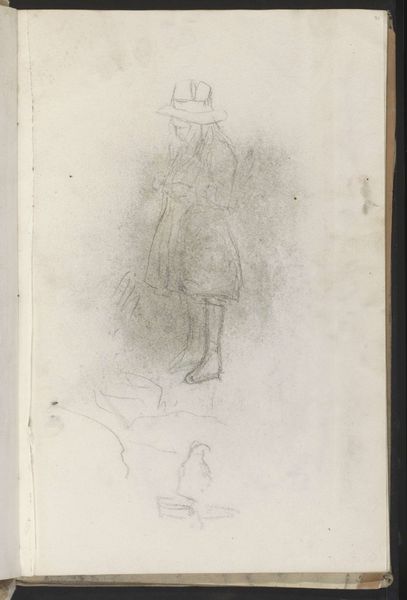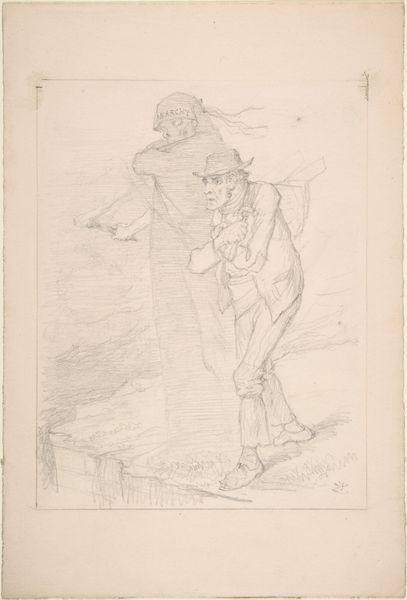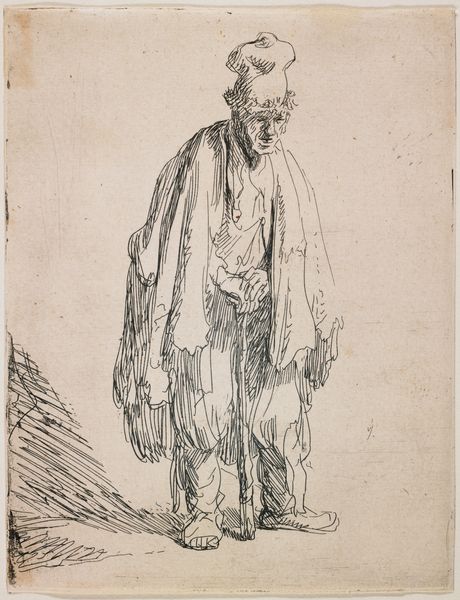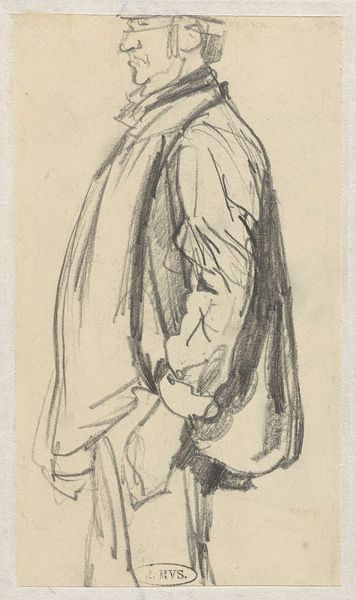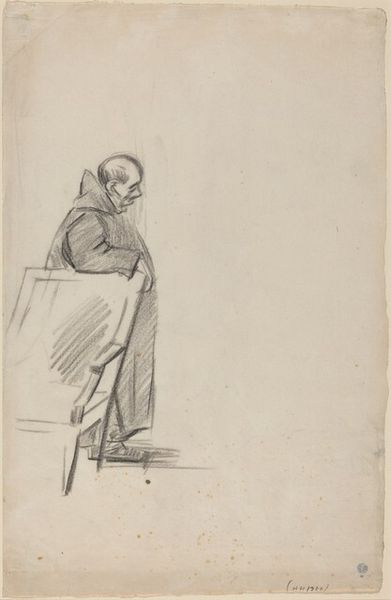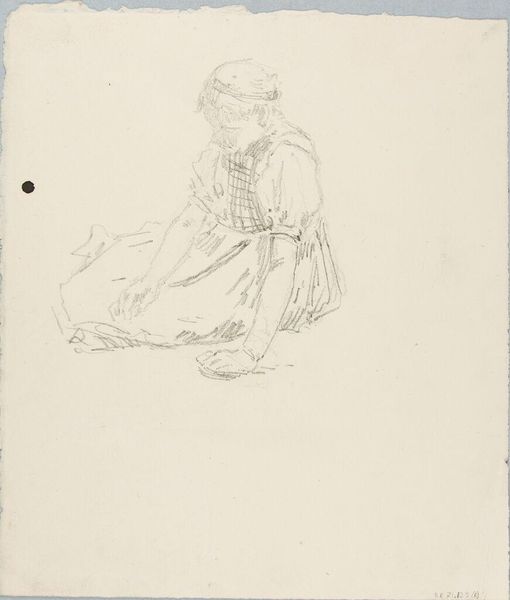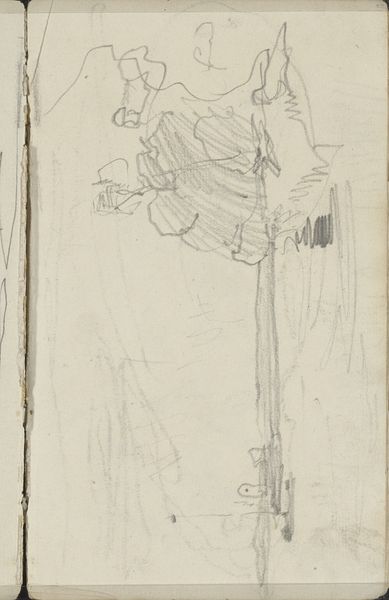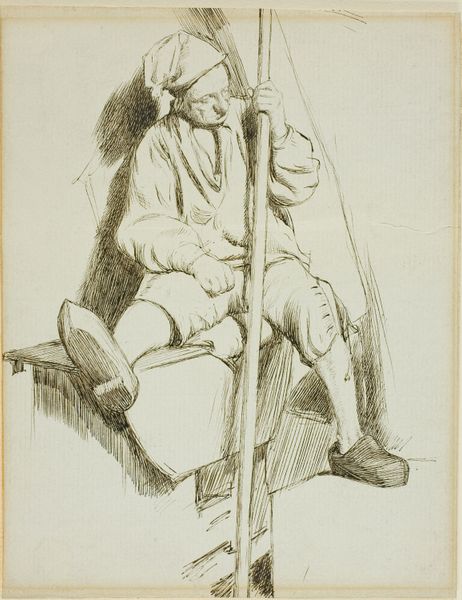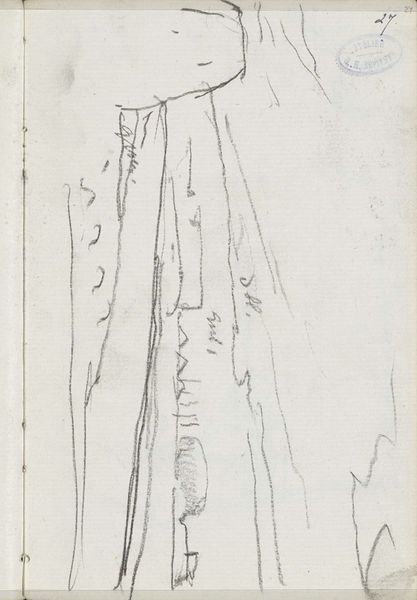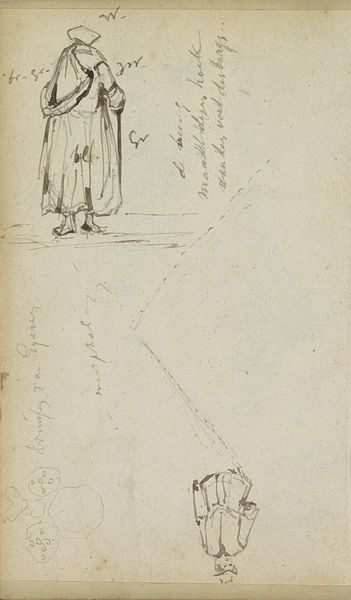
drawing, ink, pencil
#
portrait
#
drawing
#
figuration
#
ink
#
pencil
#
realism
Copyright: Rijks Museum: Open Domain
Editor: So here we have "Jan Doos, leaning against a tree trunk," made between 1841 and 1848 by Johannes Tavenraat, a drawing done in pencil and ink. There's a lovely looseness to it. What can you tell me about this work? Curator: Well, consider the context. Tavenraat wasn't just representing a boy; he was also participating in the burgeoning market for readily reproducible imagery. Ink and pencil lend themselves to that purpose, and it’s fascinating to see how a portrait, typically associated with the wealthy, begins to trickle down through new methods of artistic labor and dissemination. This is less about idealization and more about recording the observable world around him. Editor: That's interesting. So it's about who could access art through these more readily available means. The “observable world,” so realism at work? Curator: Precisely. Note how the focus shifts from the sitter’s status to their presence in a specific material reality. Look at the deliberate roughness in the lines, the economical use of materials to quickly render the figure and setting. Can you think about how that speaks to its accessibility and how its context is revealed through artistic labor, shifting our focus away from simple, representational elements. Editor: I hadn't considered it that way. So it’s not just *what* is depicted, but also *how* it’s made and *for whom*? I guess you could say this artwork can offer us an historical insight into materials used for its manufacturing and class dynamics of the era. Curator: Exactly. By examining the means of production, we can understand so much more about its cultural moment.
Comments
No comments
Be the first to comment and join the conversation on the ultimate creative platform.
